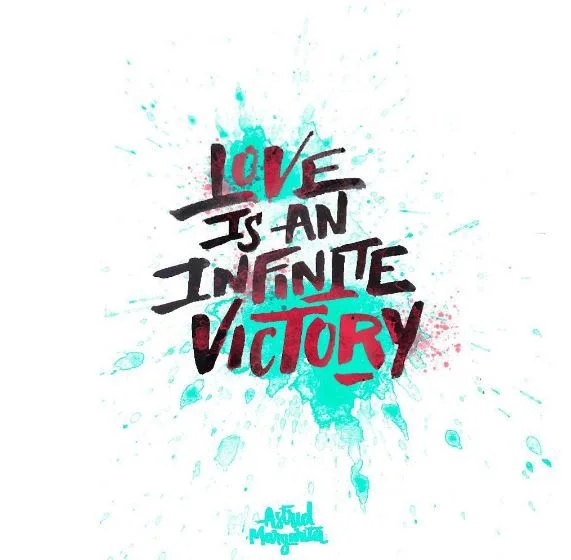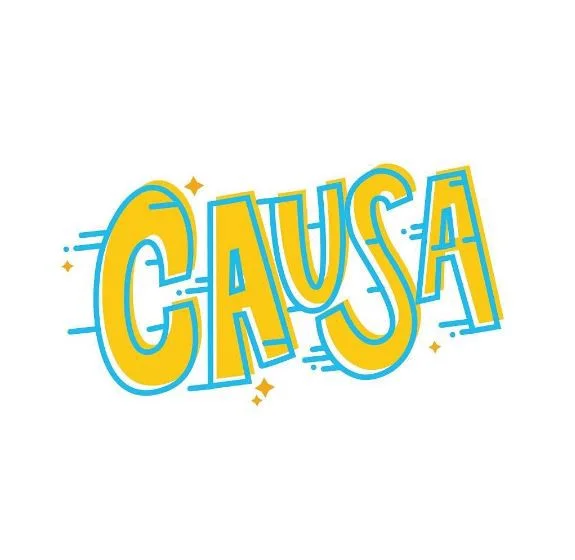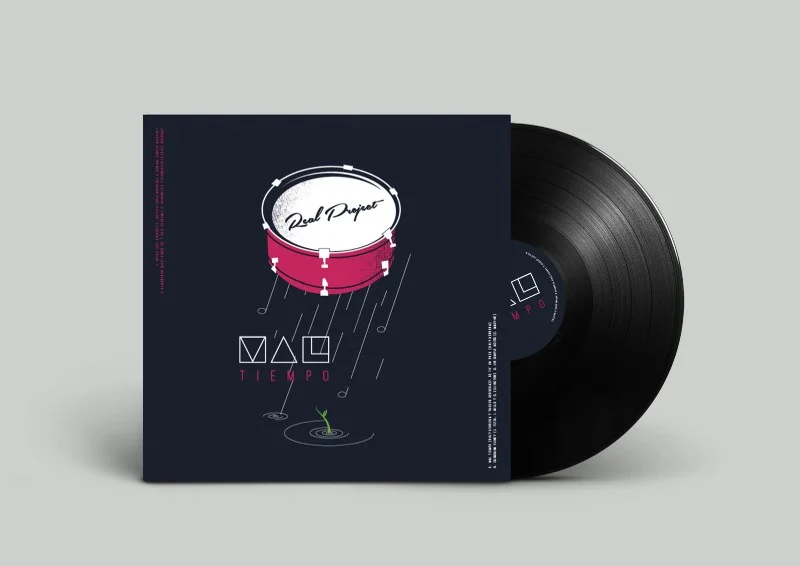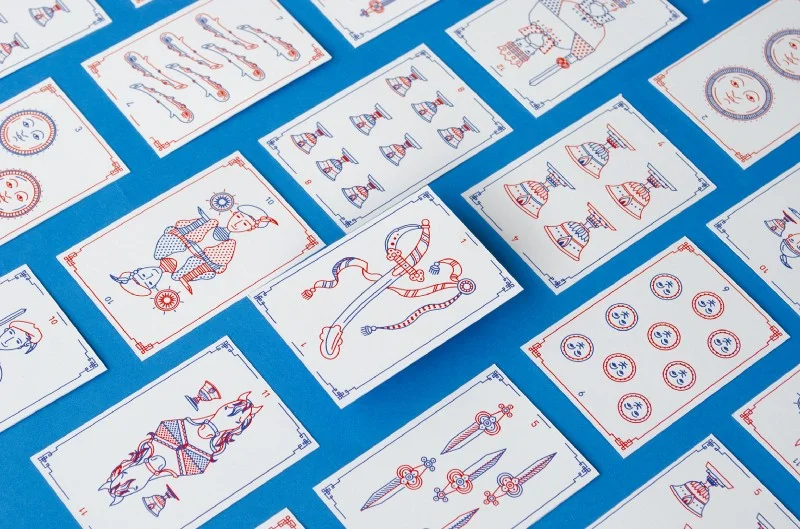Typeholic & Experimental
An Interview with Venezuelan Graphic
Designer Astrid Mendoza
Only at the age of 12, Astrid Mendoza decided she wanted to be a designer, although she didn’t know in which field. She is coming from a family that appreciates art a lot, yet she is the only one who pursues it professionally, which is not easy at the moment in her country. Venezuela is indeed in the news almost every day due to the current situation there, and the sequences of events very much affect everybody’s life including designers as well. Besides the events currently taking place in Venezuela, I asked Astrid about design traditions as well as her career and style.
I assume most of the people have already heard what has been happening in Venezuela for months now. Still, I always have the feeling that so many things are missed out in the news. Do you think the current amount of international media coverage is enough?
If I can be honest, I’d say not even the national media produce sufficient coverage of what is happening, and this inevitably affects the coverage produced by the international media. There is also a wealth of unverified information out there. The only way to get out what is really happening is with the help of social media actually.
How does the situation affect the way you and your fellow designers work?
It affects us economically, because the materials have become super expensive. On the one hand, this limits the possibilities we can think of while designing, on the other hand, this allows us to find solutions we wouldn’t necessarily think of.
Generally speaking, the situation is very complicated, because if you go to work that probably means you are with the government and don’t support the protesters, but if you don’t work, you can barely afford food. There are also people who have taken advantage of the crisis and protests to loot from local businesses. So the already complicated situation becomes even more complicated. It must be also mentioned that working exclusively as a designer doesn’t pay your bills, because the income you earn is really low.
So do you also have another job?
Yes, besides doing freelance work, I’m the head designer at the university, so I have a regular income. It’s great, because I can save more money this way.
I can see on your Behance profile that you’ve studied at the Universidad Nacional Experimental Del Yaracuy (UNEY). Please briefly tell us about the programme you have taken. What are the main areas you it focuses, etc.?
I studied there, because this university has a programme in Comprehensive Design, in which I was really interested. The programme offers courses in fashion, graphic and interior design as well as in illustration, typography and photography. In addition to that, the professors are great, so I feel I was lucky to study there.
That sounds really cool, especially if you can use all skills learnt in your daily work…
I try to incorporate them into my work whenever I can. For example, if I work on branding, I can mix typography and illustration and put the design on different surfaces. Or if the customer, who wants to build or refresh their brand, owns a place, I can take advantage of my knowledge of interior design.
I’m always interested in the design traditions of a country and aim at learning about the differences and similarities compared to other countries. What should we know about the Venezuelan design scene?
The Venezuelan design scene is very diverse, you can find lots of creative people here. However, I do think that a lot of work still needs to be done — to find out in which direction we should go or how to improve. For instance, we need to educate people about the importance of design, because some still believe that design is something unnecessary or easy to do, so you don’t need to hire a professional.
What position do you think Venezuelan design holds in the context of South America and in the world?
I think we could be in a better position. There is still some delay in technology, but Venezuelan designers tend to be receptive to new trends, and a few of them are good reference points to the others.
Who are they?
Santiago Pol, Alexander Wright — just to mention a few. The former was one of my teachers at the UNEY, and that was so cool, because he always talked about his experiences in design.
What influences you and other designers in Venezuela the most besides the abovementioned designers?
That is a complicated question, because that is something personal. Some are influenced by politics, others by our culture or music, or international trends or works. It really differs from designer to designer. Personally, I always find inspiration on Instagram and Behance, and I always look for international references for the project I work on. So I follow designers online, and if I have time I read blogs about typography and branding.
Speaking about branding… How did you develop your personal identity?
It was so difficult to develop it, because I wanted something that would really represent me. It took me a long time to finally create the monogram about which I could say ‘this is it’. But I still think about a lot, so I might change it.
In relation to your struggle of developing your identity, I’m wondering how you would describe yourself in a few words.
I’m complicated.
How would you describe your style?
I’d like to think that I don’t have a specific style, because my aim is to experiment with different trends and styles for each project. But if I really need to describe it, I’d say it’s something like typeholic and experimental.
Would you say that the possibility of experimenting drives you as a designer?
Yeah, probably. I think every designer has an artist inside. This is probably my artistic side.
Does this mean that you think an artist has more opportunity to experiment with her or his work?
Totally! While a designer has to focus on something that satisfies a need, an artist can express her or his emotions/thoughts more freely.
Isn’t it different when you work on a personal project?
If it’s personal, I would probably still focus on what works and what doesn’t, but, sure, it would have the unique touch that experimental projects have. The artistic touch, let’s say.
Let’s talk a bit about a few of your projects specifically. First about the one called Sela!
Sela is one of those projects I love, because I had the liberty of doing what I wanted. They only told me that it would be feminine, modern and young.
I’d say it’s rather subjective what we consider feminine, modern and young. Did you do any kind of research or did you “only” listen to your instincts?
I just listened to my instincts, because it targeted young women like me, so I did something I would like to see in a brand.
What is the concept behind Vikingos?
I wanted something that would recall an old-style barbershop design.
How did the letters come to life?
Those were among my first handmade letters, and it was so hard for me to find a way to make them right. The process included a lot of investigations and trials. However, I would definitely do that again.
Have you ever thought of designing an actual typeface or are you keener on lettering?
I would never quit on lettering, that’s my full-time hobby and passion, but I want to design a typeface one day. I just need the time to sit down and work on it.
Hopefully, it happens soon. You’ve also designed many logos, so I’m wondering what qualities a great logo should have.
It must be easy to recognize and hard to forget.
The project Artis is based on the concept of art as a medium of free expression. There is a discussion on whether art is always political or not. I’d say it should be political to some extent. But what responsibility do you think designers/artists have in the world today in terms of reflecting upon issues such as the protests in Venezuela?
I think we are responsible for showing the world the version of the events in which we live and also being part of the story in which the world unfolds. Design and art have the ability to send messages and express opinions quite clearly if they are proposed to do it.
Well said. What have you been working on these days?
I’m working on various projects: I have three brandings on the way, and two personal projects. One is about the actual situation of Venezuela, and the other is an experiment of lettering with a Venezuelan slang.
What are your plans?
Sooner or later I would love to become a world traveller, and I’d like to continue doing lettering and learn some cool stuff.















